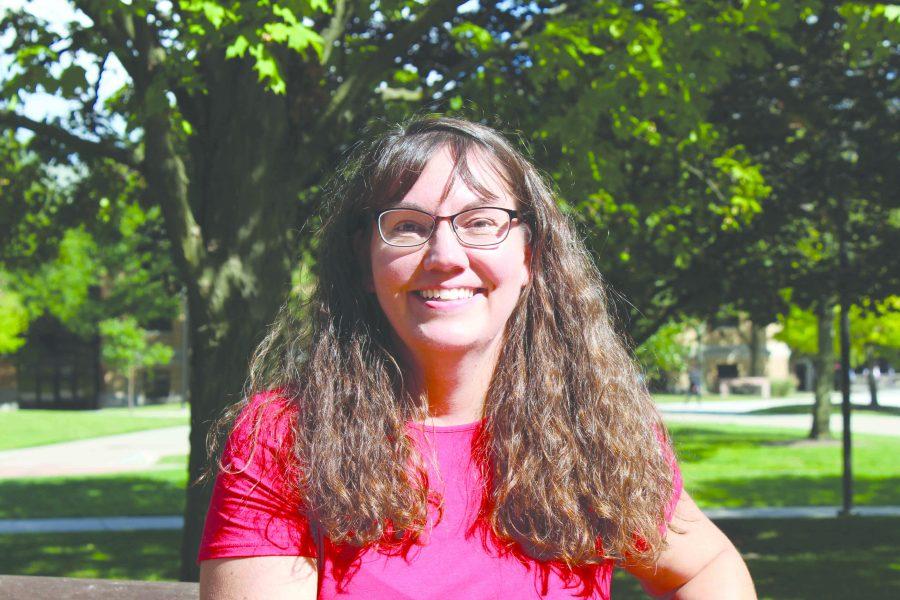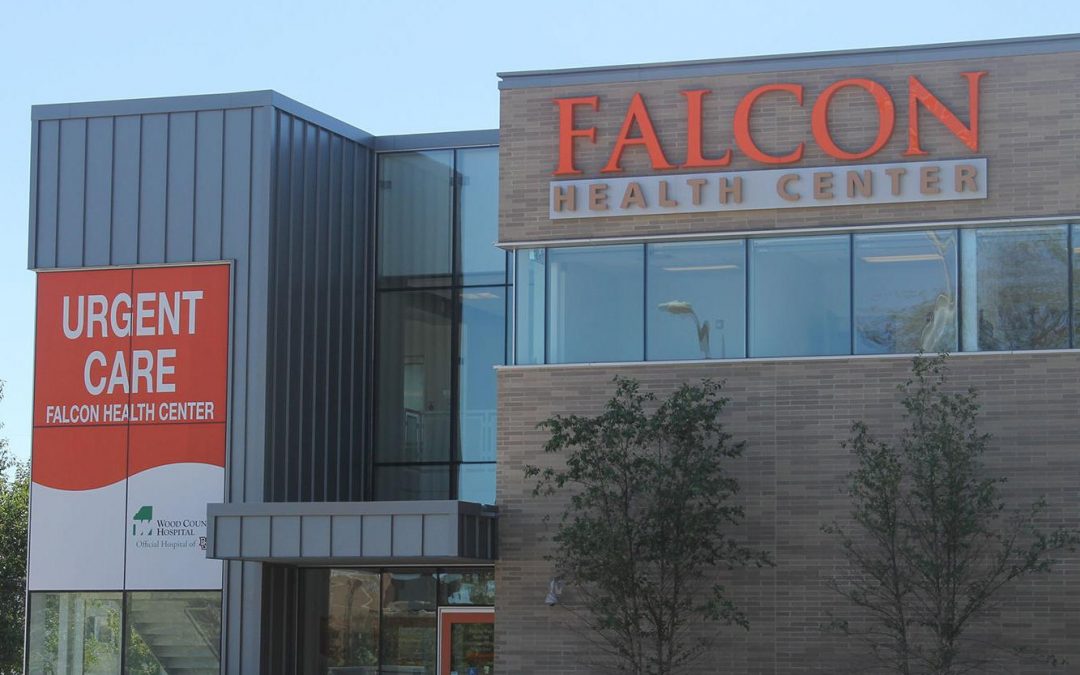Sandusky Bay isn’t ‘pretty blue’ right now, Michelle Neudeck said. Instead, a pesky microorganism took over and painted the bay an unattractive bluish-green color, and it doesn’t look like it is budging anytime soon.
Microbiology major and graduate student Neudeck, 48, devoted her entire research to the stubborn microorganism “Planktothrix agardhii,” which is the cyanobacteria behind the bluish-green algae bloom in Sandusky Bay’s waters.
The algae gives off a toxin, and while water treatment plants keep the algal blooms from harming people who get their water from Sandusky Bay, it can still cause several problems.
Sitting in the Falcon Media newsroom for about an hour, Neudeck delved into the microscopic world of cyanobacteria as she described several problems caused by the algal blooms.
“First of all, the Planktothrix blooms…are natural,” the graduate student said, “but the reason why it matters is because there’s 12 million people around Lake Erie using it as a water source. The problem with this cyanobacteria is that it produces a toxin, so if you ingest too much of it then it can cause damage.”
Even though Planktothrix agardhii are natural and have been around for millions of years, they’ve been growing prolifically throughout the past decade, she said. The challenge for scientists is figuring out how to reduce it back to manageable levels.
This microorganism also happens to produce the same toxin as its partner-in-crime “Microcystis,” which causes the algal blooms in Lake Erie.
Understanding Sandusky Bay’s Planktothrix agardhii has proven to be both vexing and interesting for Neudeck’s biology professor George Bullerjahn, who said there was not enough research to fully understand the microorganism yet.
“If you look at the distribution of the algae in (Lake Erie)…this is all Microcystis. Near shore environments…you have this other organism called Planktothrix, and that lives in Sandusky Bay,” Bullerjahn said, pointing to photos of Sandusky Bay’s algal blooms on his desktop computer. “Scientifically, I’m kind of interested because we have two different organisms that produce the same toxin. Why does Planktothrix live here, and why does Microcystis live here?”
Part of the reason is because Planktothrix thrives on Nitrogen pulses, which is easily accessible in Sandusky Bay, he said. However, the bay’s microorganism can be frustrating in the fact that it just refuses to leave.
“Planktothrix is there no matter what. You can’t get rid of this guy,” the professor said. “He’s there all the time from May to Halloween. We can’t get rid of him.”
Currently, there are more economic consequences from the algae bloom than environmental ones. Tourism rapidly declines around Lake Erie due to the blooms, and property values for housing plummets.
The main culprit behind the algal blooms in Sandusky Bay is agricultural runoff, Bullerjahn said. His student added another reason, that being the bay is just getting older.
“Think of it as a middle-aged older person. You get older, the bay is getting shallower,” Neudeck said. “(The water) is leaving nutrients behind, and it’s not refreshing itself as easily.”
Far from being deterred, Neudeck decided to put her brain to work in hopes of finding a solution. Her way of finding a solution was to discover her sea legs.
“We have to load up all the scientific equipment into an Ohio Department of Natural Resources boat, and they take us out onto the bay,” she said. “We go visit eight different sites where we’re going to take water samples, light meter readings, and we’re going to measure for dissolved oxygen and pH and conductivity.”
Neudeck is out onto the bay by nine in the morning, and she is not done filling water bottles with samples until about two or three in the afternoon. Then, when all her sampling is done, she gets to play around with the samples by extracting the Planktothrix agardhii’s DNA and RNA.
“It’s so much fun,” she said. “I just think that cyanobacteria are cool—I’m a nerd like that.”
The graduate student leads quite a busy life as she studies for her master’s degree while teaching for Lorain Community College. Her life has long been leading her towards this point in her microbiology career, but it definitely didn’t start out with cyanobacteria.
“For me, personally,” Neudeck said, pausing, laughing a bit. “So, I kind of have a weird life. Rarely have I ever gone through and pursued a job; I haven’t pursued a job since I graduated college. Since then it’s always been people asking me to do things, and I said, ‘Sure, why not?’”
After three years of teaching, she decided to go after her master’s degree at the University.
“It’s not like I woke up one day and said, ‘I want to go do cyanobacteria!’ It’s one of the things that my life just led me that way,” Neudeck said.
Bullerjahn saw the passion she put into her work and didn’t let Neudeck’s efforts go unnoticed.
“She works hard. I’m glad she’s in the lab,” Bullerjahn said. “She’s been able to adapt to all the different challenges; (the job) is a combination of field work, lab work, and computer work. She’s able to do all of those things— cheerfully as well.”
Neudeck was indeed cheerful in the Falcon Media newsroom as she explained her passion:
“I am just fascinated with the organization of microorganisms, and DNA and how DNA works—and how DNA gets transcribed into RNA, and how RNA gets translated into proteins and that’s what makes everything in life work.”
She’s spent hours and hours getting to this point in her career, but she is now here. She’s teaching, getting her master’s degree and filling a lot of water bottles with cyanobacteria from Sandusky Bay. It’s what she does.














